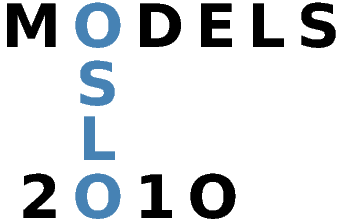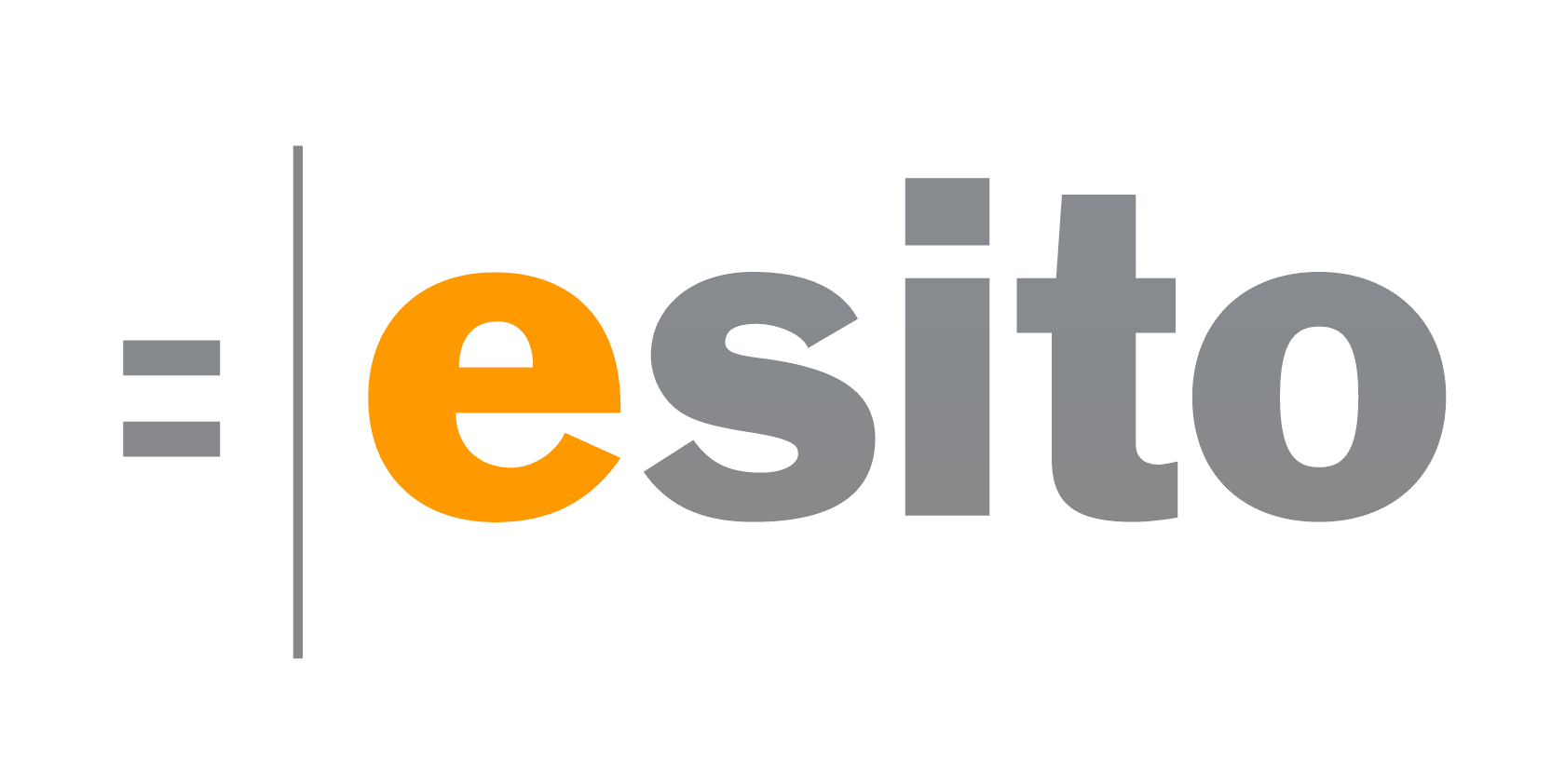




MODELS 2010
is organized by

|
|

|
Silver Sponsors


Keynote Speakers
Edward A Lee: Modeling Heterogeneous Systems with Heterogeneous Models
Abstract
Complex systems demand diversity in the modeling mechanisms. We see this very clearly with cyber-physical systems (CPS), which combine computing and networking with physical dynamics, and hence require model combinations that integrate dynamics described using differential equations with models of software. We also see it in applications where timed interactions with components are combined with conventional algorithmic computations, such as in networked computer games. We even see it in traditional software systems when we have concurrent interactions between algorithmic components.One way to deal with a diversity of requirements is to create very flexible modeling frameworks that can be adapted to cover the field of interest. The downside of this approach is a weakening of the semantics of the modeling frameworks that compromises interoperability, understandability, and analyzability of the models. An alternative approach is to embrace heterogeneity and to provide mechanisms for a diversity of models to interact.
In this talk, I will describe an approach that achieves such interaction between diverse models using a concept that we call “abstract semantics.” An abstract semantics is a deliberately incomplete semantics that cannot by itself define a useful modeling framework. It instead focuses on the interactions between diverse models, reducing the nature of those interactions to a minimum that achieves a well-defined composition. I will illustrate how such an abstract semantics can handle many heterogeneous models that are built today (such as Statecharts, which combine state machines with synchronous concurrent models, hybrid systems, which combine state machines with differential equations, process networks, which combine imperative programs with message passing concurrency, etc.). I will also show how it handles combinations that are not readily available in modeling tools today. I will illustrate these combinations with examples prototyped in Ptolemy II.
Biography
Edward A. Lee is the Robert S. Pepper Distinguished Professor and former chair of the Electrical Engineering and Computer Sciences (EECS) department at U.C. Berkeley. His research interests center on design, modeling, and simulation of embedded, real-time computational systems. He is a director of Chess, the Berkeley Center for Hybrid and Embedded Software Systems, and is the director of the Berkeley Ptolemy project. He is co-author of five books and numerous papers. He has led the development of several influential open-source software packages, notably Ptolemy and its various spinoffs. His bachelors degree (B.S.) is from Yale University (1979), his masters (S.M.) from MIT (1981), and his Ph.D. from U.C. Berkeley (1986). From 1979 to 1982 he was a member of technical staff at Bell Telephone Laboratories in Holmdel, New Jersey, in the Advanced Data Communications Laboratory. He is a co-founder of BDTI, Inc., where he is currently a Senior Technical Advisor, and has consulted for a number of other companies. He is a Fellow of the IEEE, was an NSF Presidential Young Investigator, and won the 1997 Frederick Emmons Terman Award for Engineering Education.Ole Lehrmann Madsen: A Unified Approach to Modeling and Programming
Abstract
Before the era of object-orientation, software development suffered from the use of different languages and representation used for analysis, design and implementation ― so-called structured analysis and design (SA/SD). One of the strengths of object-orientation is that it provided a unified approach for modeling as well as for programming. This framework provided language constructs as well as an associated conceptual framework.The dual support for modeling and programming may be traced back to SIMULA where one of the main goals was to provide a language for modeling as well as programming. The focus on modeling and programming has been one of the main characteristics of the Scandinavian School of object-orientation where BETA is another representative.
Current mainstream of object-oriented software development, however, seems to be going in the direction of separation of modeling and programming. The numerous technologies and books on object-oriented programming are primarily concerned with the technical aspects of programming and pay very little attention to modeling aspects. On the other side we see a development of modeling languages where the emphasis is on graphical notations and executable models.
The purpose of this talk is to go back to the future and reintroduce some of the ideas of SIMULA and discuss a unified approach to modeling and programming.
Biography
Ole Lehrmann Madsen is a professor of Computer Science, Aarhus University, and director of the Alexandra Institute ltd. The Alexandra Institute is a non-profit application-oriented research institute (www.alexandra.dk) within information technology. The main goal of Alexandra is to bridge building between research and private- and public organizations. Alexandra organizes joint research projects based on problems in society including businesses.His area of research is object-oriented software systems, including programming, modeling, languages, software development environments, software architecture and pervasive computing. He was one of the creators (together with Bent Bruun Kristensen, Birger Møller-Pedersen and the late Kristen Nygaard) of the BETA programming language and the Mjølner software development environment. He is a co-founder and chairman of the board for Mjølner Informatics ltd, which is based on BETA and the Mjølner project. He has a PhD. from Aarhus University in computer science. He has previously been a research associate at CSLI at Stanford University (1984-85) and senior research associate at Sun Labs in Mountain View, California (1994-95).
Pamela Zave: Modeling the Internet
Abstract
The Internet has changed the world. Its astounding success has led to explosive growth in users, traffic, and applications, which has made its original architecture and protocols obsolete. Currently the networking community is questioning all aspects of Internet technology, as researchers and stakeholders try to understand how to meet new requirements for functionality, quality of service, availability, and security. In this technological crisis, one of our most powerful technical tools, namely functional modeling (as opposed to performance modeling), is being completely ignored. In this talk I explain how modeling can be put to good use in the Internet context, how the culture of the Internet Engineering Task Force and the networking research community resist such efforts, and what might be done to bring about a cultural change. The talk will be illustrated with examples and results from several projects using different modeling languages and techniques. These include:- A project to understand, formalize, and partially verify SIP, the dominant protocol for IP-based multimedia applications. The official specification of SIP consists of many thousands of pages of English text.
- A project revealing many unknown defects in the Chord routing protocol, which is the most-cited protocol for maintenance of peer-to-peer networks.
- A project to generate modular telecommunication services from models in a high-level, domain-specific language. This long-term project, based on the DFC architecture, has already produced two large-scale deployed systems.
- A project to discover how to meet complex requirements for application sessions using software composition.
Biography
Pamela Zave received an A.B. degree in English from Cornell University, and a Ph.D. in computer sciences from the University of Wisconsin-Madison. She has held positions at the University of Maryland and Bell Labs, and is now with AT&T Laboratories-Research.Dr. Zave is interested in all aspects of formal methods for software engineering as applied to networks. For the past ten years she has led a group of researchers building and analyzing IP-based voice and multimedia services using the Distributed Feature Composition architecture, invented by her and Michael A. Jackson.
Dr. Zave is an ACM Fellow and an AT&T Fellow. She has won two Most Influential Paper awards, four Best Paper awards, the AT&T Strategic Patent Award, and the AT&T Science and Technology Medal. She is currently chair of IFIP Working Group 2.3 on Programming Methodology.
Banquet Speaker
Richard Soley: Ten Years of Model Driving
Biography
Dr. Richard Mark Soley is Chairman and Chief Executive Officer of the Object Management Group, Inc. (OMG) and Executive Director of the SOA Consortium.As Chairman and CEO of the OMG, Dr. Soley is responsible for the vision and direction of the world's largest consortium of its type. Dr. Soley joined the nascent OMG as Technical Director in 1989, leading the development of OMG's world-leading standardization process and the original CORBA specification. In 1996, he led the effort to move into vertical market standards (starting with healthcare, finance, telecommunications and manufacturing) and modeling, leading first to the Unified Modeling Language (UML) and later the Model Driven Architecture (MDA). He also led the effort to establish the SOA Consortium in January 2007.
Previously, Dr. Soley was a cofounder and former Chairman/CEO of A I Architects, Inc, maker of the 386 HummingBoard and other PC and workstation hardware and software. Prior to that, he consulted for various technology companies and venture firms on matters pertaining to software investment opportunities. Dr. Soley has also consulted for IBM, Motorola, PictureTel, Texas Instruments, Gold Hill Computer and others. He began his professional life at Honeywell Computer Systems working on the Multics operating system.
A native of Baltimore, Maryland, U.S.A., Dr. Soley holds the bachelor's, master's and doctoral degrees in Computer Science and Engineering from the Massachusetts Institute of Technology.
Last updated Wednesday, 20-Oct-2010 14:38:25 CEST by models2010@ifi.uio.no.
News
- January 24, 2011
The conference proceedings are now available online as Springer LNCS 6394 and 6395. - October 20, 2010
If you were unable to attend, the three keynote presentations are now available. - October 13, 2010
You can now admire the photographs taken during the conference.
Co-located events